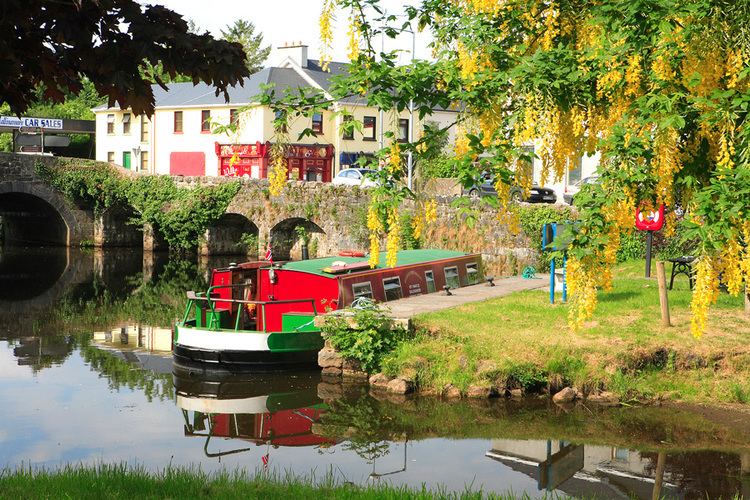Irish Grid Reference H131112 Elevation 74 m Local time Wednesday 1:28 AM | Website www.ballinamore.ie Population 889 (2011) | |
 | ||
Weather 2°C, Wind W at 6 km/h, 89% Humidity | ||
Convent road ballinamore co leitrim ireland
Ballinamore (historically Bellanamore, from Irish: Béal an Átha Móir, meaning "mouth of the big ford" [ˈbʲeːl̪ˠˈan̪ˠˈaːhəˈmˠoːɾʲ]) is a small town in County Leitrim, Ireland, 19 km (12 mi) from the border with Northern Ireland. It is located on the R202 regional road where it is joined by the R199 and R204. Béal an Átha Móir means "mouth of the big ford", and the town is so named because it was the main crossing point of the Yellow River, which flows past the town. This waterway become known as the Ballinamore-Ballyconnell canal, built to link the Rivers Erne and Shannon in the 1840s. It reopened as the Shannon–Erne Waterway in 1994.
Contents
- Convent road ballinamore co leitrim ireland
- Map of Ballinamore Co Leitrim Ireland
- History
- Transport
- Notable features
- References
Map of Ballinamore, Co. Leitrim, Ireland
History
The history of Ballinamore has enabled it to grow through the centuries as a town with a large variety of trades and tradesmen. The first mention was under the plantation of Leitrim in 1621 when the Manor of Ballinamore was granted to Sir Fenton Parsons with 600 acres (2.4 km2) of arable land. In the 18th century, settlers from County Down who were dispossessed by landowners travelled to the west of Ireland looking for new places to live. They stopped in an area of land they found suitable notably for its location near the rivers Shannon and Erne. This was the origins of Ballinamore. These dispossessed people brought with them numerous skills such as blacksmiths, tinsmiths, skilled craftsmen and farmers. Between 1695 and 1750 there was a flourishing ironworks. During at least the 19th and 20th centurys, two annual fairs were held at Ballinamore on- May 12, and November 12.
Transport
Ballinamore railway station opened on 24 October 1887, but finally closed on 1 April 1959. It was part of the narrow gauge Cavan and Leitrim Railway and was the hub of the line, with the locomotive depot and works. It was the point where the line from Dromod through Mohill and Ballinamore to Belturbet branched to Kiltubrid, Drumshanbo and Arigna.
The Ballinamore and Ballyconnell Canal was opened in 1860 but was not a success and fell into disrepair. It was restored in 1994 as the Shannon-Erne Waterway and now brings more tourists into the town.
Ballinamore has daily Locallink bus services to Carrick on Shannon and Dromod railway station Monday to Saturday.
